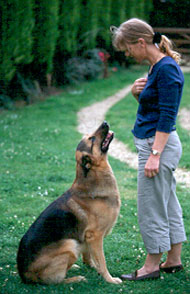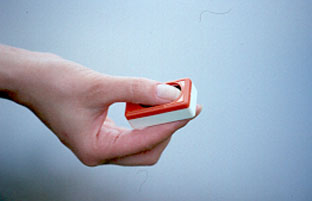- Home
- FAQs
- Customer Video Gallery
- Customer Photo Gallery
- Bird Facts
- Bird Food Blog
- Bird Information
- Feeding Advice
- Small Animal Information
- A to Z of Guinea Pigs
- A to Z of Hamsters
- A to Z of Rabbits
- Basic Care for Guinea Pigs
- Basic Care for Hamsters
- Basic Care for Rabbits
- Basic care for Chinchillas
- Basic care for Ferrets
- Basic care for Gerbils
- Basic care for Mice
- Basic care for Rats
- Buying a Healthy Small Animal
- Does your Reptile need a Licence
- Equipment for Ferrets
- Equipment for Hamsters
- Equipment for Mice
- Equipment for your Chinchilla
- Equipment for your Gerbil
- Equipment for your Guinea Pig
- Equipment for your Rabbit
- Keeping a House Rabbit
- Dog Information
- Cat Information
- Customer Information
- Fat Balls
- Suet Pellets
- Straights
- Seed Mixes
- Suet Treats
- Mealworms
- Bird Feeders
- My Account
Clicker Training For dogs
With all the dogs my family has ever owned the same pattern has repeated itself – they would sit, heel and stay for my mum, keeper of the food bowl and dog trainer-in-chief, but the rest of the family could quite literally go and whistle for them!
If this sounds familiar and your dog is confused by the different versions of ‘sit’ used by each family member, or if you have a new puppy and want to start educating him, then clicker training may be the perfect solution.
What is a clicker?
A clicker is a small plastic box with a metal tongue inside, that when depressed and released makes a double clicking sound. It is this sound your dog will come to regard as the signal for, ‘Good boy, you have done that correctly, now here is your treat’.
Twootz provides a great range of complete dry dog food and puppy food specially formulated to provide all the nutrients necessary to maintain a nutritionally balanced diet that helps promote good health and vitality. Manufactured in the UK from quality ingredients this range has something for every dog.
There are many reasons why a clicker (also known as a conditioned reinforcer) is an extremely powerful training tool, but the three most pertinent are:
Why does it work?
Dolphin trainers developed clicker training. As the dolphin performed a required behaviour (trick), his trainer clicked and offered a fish as a reward when the dolphin swam back to him. The dolphin learned that a click meant he had just done something correctly. Without the clicker, the dolphin wouldn’t have known what it was he’d done right or when – was it the trick or swimming back to get the fish that was the correct behaviour?
This accuracy in pinpointing a specific behaviour speeds up the learning process.
How does it work?
Clicker training can be applied in exactly the same way to your dog, but first you need to condition him to the sound of the clicker. To do this you simply click, then give him a ‘high-value’ treat such as a sliver of sausage or liver. Repeat this 10 times or so and you will probably notice your dog is looking for food after you’ve clicked, having made the association between the two – hear the click and the treat is not far behind!
Lures
The next step is taken by encouraging your dog to perform a particular behaviour you want to reward. Sitting is always a good start as your dog will usually do it naturally.
You can either stand around with the clicker and treat in hand and wait for him to sit of his own accord, or you can lure him into a sit by holding the treat close to the end of his nose and lifting it up and back over his head. As his head lifts, his bottom will drop and he will sit. As his bottom touches the ground, click and give him the treat.
Do not say ‘sit’, because at this stage your dog does not know what the vocal command ‘sit’ means. Even if you are training an older dog who has learned the basics before, you will still need to work with just the clicker for now.
Jackpots
Lure the sit a few times, clicking and treating each time, then stand back and wait. Your dog will be thinking, ‘How can I get another treat’, before light dawns and he’ll sit down.
Click immediately and then reward his action with a handful of tasty treats (i.e. a ‘jackpot’). Do not use vocal praise as this will ruin his concentration. ‘Brilliant!’ thinks your dog, ‘All I have to do is sit and I get food!’ You, meanwhile, have successfully completed the next stage of clicker training by getting your dog to offer a desirable behavior.
Rewarding behaviour
As far as your dog is concerned, he is training you – and that is the crux of clicker training. He will offer behaviours he knows will earn him a reward. There is also no punishment involved if he doesn’t perform a behaviour correctly – he simply doesn’t get a treat and has to think a little harder. As a form of mental stimulation, clicker training is wonderful.
Clicking into place
If a particular behaviour is reinforced with a reward, your dog is likely to repeat it. This is why many dogs love raiding dustbins, because it is a self-rewarding behaviour – they get goodies when they stick their heads in.
Clicker training capitalises on your dog’s desire to repeat reinforced behaviour, ie behaviour that pleases his owner. And because of the immediacy of the clicker in signalling what was correct, he has a clear picture in his mind of what he is supposed to do.
Keep it fun
Clicker training works quickly with many dogs, so keep training sessions short – three 10-minute sessions a day is enough to start with. Your dog will gain more from these than from vast amounts of time spent not understanding increasingly frustrated vocal commands. Plus short bursts of training mean they are much easier to keep fun – a vital ingredient to success.
Shaping behaviour
Clicker training can be used to achieve any kind of behaviour. As you can be some distance away from your dog (rather than right next to him, treat in hand), you can work on recalls (getting your dog to return to you when called) and down-stays (lying down and staying put) knowing you will still be able to reward required behaviours.
You can build up to quite complicated behaviours – such as opening and shutting doors – by rewarding each section of the trick (known as shaping) until a complete behaviour pattern is built.
If food does not motivate your dog, clicker training still works wonders. Find his passion, whether it’s a squeaky toy or a tummy-rub, and use that as the reward instead. For versatility, the little plastic box is unbeatable.
Tip: Some dogs are extremely sensitive to sounds and loud clicking may distress them. If muffling the clicker sound by wrapping thick cloth around your hand or even using it inside well-padded oven gloves doesn’t work, you’ll have to accept that clicker training is not appropriate.

If this sounds familiar and your dog is confused by the different versions of ‘sit’ used by each family member, or if you have a new puppy and want to start educating him, then clicker training may be the perfect solution.
What is a clicker?
A clicker is a small plastic box with a metal tongue inside, that when depressed and released makes a double clicking sound. It is this sound your dog will come to regard as the signal for, ‘Good boy, you have done that correctly, now here is your treat’.
Twootz provides a great range of complete dry dog food and puppy food specially formulated to provide all the nutrients necessary to maintain a nutritionally balanced diet that helps promote good health and vitality. Manufactured in the UK from quality ingredients this range has something for every dog.

There are many reasons why a clicker (also known as a conditioned reinforcer) is an extremely powerful training tool, but the three most pertinent are:
- It is an accurate reward tool – you can pinpoint the exact behaviour you desire with an immediate click, which is far better than a time-lapsed pat and biscuit
- It will always sound the same regardless of who is doing the training – your dog won’t become attached to one person’s voice and commands in particular
- It buys you time – the dog learns that a click means a treat will follow soon after, rather than you having to provide a treat the instant he performs a behaviour
Why does it work?
Dolphin trainers developed clicker training. As the dolphin performed a required behaviour (trick), his trainer clicked and offered a fish as a reward when the dolphin swam back to him. The dolphin learned that a click meant he had just done something correctly. Without the clicker, the dolphin wouldn’t have known what it was he’d done right or when – was it the trick or swimming back to get the fish that was the correct behaviour?
This accuracy in pinpointing a specific behaviour speeds up the learning process.
How does it work?
Clicker training can be applied in exactly the same way to your dog, but first you need to condition him to the sound of the clicker. To do this you simply click, then give him a ‘high-value’ treat such as a sliver of sausage or liver. Repeat this 10 times or so and you will probably notice your dog is looking for food after you’ve clicked, having made the association between the two – hear the click and the treat is not far behind!
Lures
The next step is taken by encouraging your dog to perform a particular behaviour you want to reward. Sitting is always a good start as your dog will usually do it naturally.
You can either stand around with the clicker and treat in hand and wait for him to sit of his own accord, or you can lure him into a sit by holding the treat close to the end of his nose and lifting it up and back over his head. As his head lifts, his bottom will drop and he will sit. As his bottom touches the ground, click and give him the treat.
Do not say ‘sit’, because at this stage your dog does not know what the vocal command ‘sit’ means. Even if you are training an older dog who has learned the basics before, you will still need to work with just the clicker for now.
Jackpots
Lure the sit a few times, clicking and treating each time, then stand back and wait. Your dog will be thinking, ‘How can I get another treat’, before light dawns and he’ll sit down.
Click immediately and then reward his action with a handful of tasty treats (i.e. a ‘jackpot’). Do not use vocal praise as this will ruin his concentration. ‘Brilliant!’ thinks your dog, ‘All I have to do is sit and I get food!’ You, meanwhile, have successfully completed the next stage of clicker training by getting your dog to offer a desirable behavior.
Rewarding behaviour
As far as your dog is concerned, he is training you – and that is the crux of clicker training. He will offer behaviours he knows will earn him a reward. There is also no punishment involved if he doesn’t perform a behaviour correctly – he simply doesn’t get a treat and has to think a little harder. As a form of mental stimulation, clicker training is wonderful.
Clicking into place
If a particular behaviour is reinforced with a reward, your dog is likely to repeat it. This is why many dogs love raiding dustbins, because it is a self-rewarding behaviour – they get goodies when they stick their heads in.
Clicker training capitalises on your dog’s desire to repeat reinforced behaviour, ie behaviour that pleases his owner. And because of the immediacy of the clicker in signalling what was correct, he has a clear picture in his mind of what he is supposed to do.
Keep it fun
Clicker training works quickly with many dogs, so keep training sessions short – three 10-minute sessions a day is enough to start with. Your dog will gain more from these than from vast amounts of time spent not understanding increasingly frustrated vocal commands. Plus short bursts of training mean they are much easier to keep fun – a vital ingredient to success.
Shaping behaviour
Clicker training can be used to achieve any kind of behaviour. As you can be some distance away from your dog (rather than right next to him, treat in hand), you can work on recalls (getting your dog to return to you when called) and down-stays (lying down and staying put) knowing you will still be able to reward required behaviours.
You can build up to quite complicated behaviours – such as opening and shutting doors – by rewarding each section of the trick (known as shaping) until a complete behaviour pattern is built.
If food does not motivate your dog, clicker training still works wonders. Find his passion, whether it’s a squeaky toy or a tummy-rub, and use that as the reward instead. For versatility, the little plastic box is unbeatable.
Tip: Some dogs are extremely sensitive to sounds and loud clicking may distress them. If muffling the clicker sound by wrapping thick cloth around your hand or even using it inside well-padded oven gloves doesn’t work, you’ll have to accept that clicker training is not appropriate.











